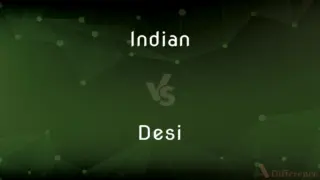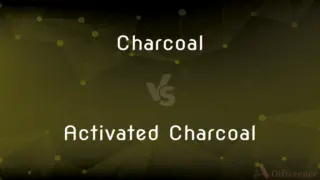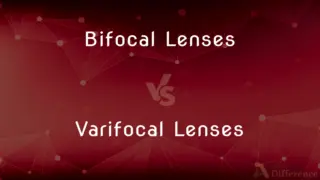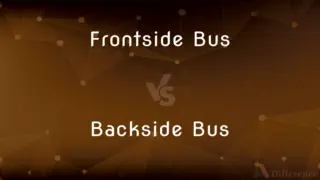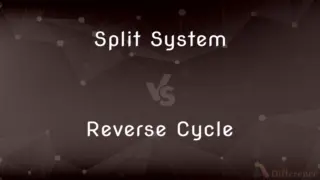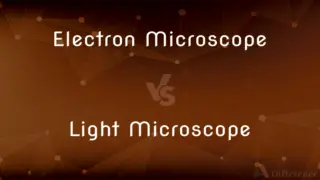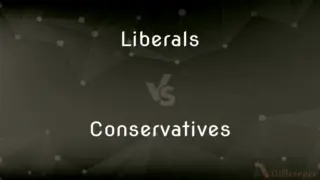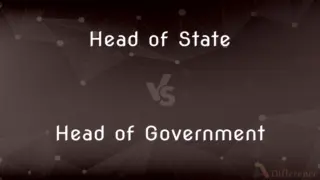Millets vs. Grains — What's the Difference?
By Tayyaba Rehman — Published on November 2, 2023
Millets are small-seeded grasses, often drought-resistant; grains refer to the hard, edible seeds of plants, including cereals.

Difference Between Millets and Grains
Table of Contents
ADVERTISEMENT
Key Differences
Millets are a group of highly variable small-seeded grasses, frequently grown as cereal crops in various parts of the world. In contrast, grains is a broader term that encompasses the edible seeds of various plants, which includes not only cereals but also legumes and pseudocereals.
One of the defining features of millets is their resilience to harsh weather conditions, often being drought-resistant. This sets them apart from some other grains which might need more specific growth conditions.
Nutritionally, millets offer a range of health benefits including being gluten-free and rich in fiber and minerals. While grains, in a broader sense, can offer a wide variety of nutrients depending on the type, such as proteins in legumes or carbohydrates in cereals.
Cultivation-wise, millets are often grown in regions with poor soil quality where other crops might fail. However, grains as a whole, given their diversity, are grown worldwide in varied climates and soils.
In culinary applications, millets can be used in a similar way as other cereals, often in porridges or breads. Grains, being more general, have a vast range of culinary uses, from rice dishes to wheat bread and beyond.
ADVERTISEMENT
Comparison Chart
Definition
Small-seeded grasses.
Edible seeds of various plants.
Climate Resilience
Often drought-resistant.
Varies widely; some require specific conditions.
Nutritional Benefits
Gluten-free, rich in fiber and minerals.
Varies; proteins in legumes, carbohydrates in cereals, etc.
Cultivation Regions
Regions with poor soil quality.
Grown worldwide in varied climates and soils.
Culinary Applications
Used in porridges, breads.
Vast range, from rice dishes to wheat bread and beyond.
Compare with Definitions
Millets
Small-seeded cereal crops.
Many farmers prefer growing millets due to their drought-resistant nature.
Grains
Hard, edible seeds of plants.
Rice and wheat are two of the most consumed grains globally.
Millets
Gluten-free cereal option.
People with gluten intolerance can consume dishes made from millets.
Grains
Can be classified as cereals, legumes, or pseudocereals.
Quinoa and amaranth are grains but classified as pseudocereals.
Millets
A rich source of fiber and minerals.
Incorporating millets into one's diet can boost overall nutrition.
Grains
Often milled to produce flour.
Bakers require flour from grains like wheat to produce bread.
Millets
Grasses often grown in harsh conditions.
In arid regions, millets often thrive where other crops fail.
Grains
A small, dry, one-seeded fruit of a cereal grass, having the fruit and the seed walls united
A single grain of wheat.
Gleaned the grains from the ground one at a time. Also called caryopsis.
Millets
Frequently used in traditional dishes.
In several cultures, millets are a staple used in porridges and flatbreads.
Grains
The fruits of cereal grasses especially after having been harvested, considered as a group
The grain was stored in a silo.
Millets
Any of various annual grasses with small grains that are harvested for food, livestock feed, and birdseed, especially proso millet.
Grains
A cereal grass
Wheat is a grain grown in Kansas.
Millets
The grains of any of these plants.
Grains
Cereal grasses considered as a group
Grain is grown along the river.
Millets
Plural of millet
Grains
A relatively small discrete particulate or crystalline mass
A grain of sand.
Grains
A small amount or the smallest amount possible
Hasn't a grain of sense.
Grains
(Aerospace) A mass of solid propellant.
Grains
Abbr. gr. A unit of weight in the US Customary System, an avoirdupois unit equal to 0.002285 ounce (0.065 gram).
Grains
The markings, pattern, or texture of the fibrous tissue in wood
Cherry wood has a fine grain.
Grains
The direction of such markings
Cut a board with the grain.
Grains
The side of a hide or piece of leather from which the hair or fur has been removed.
Grains
The pattern or markings on this side of leather.
Grains
The pattern produced, as in stone, by the arrangement of particulate constituents.
Grains
The relative size of the particles composing a substance or pattern
A coarse grain.
Grains
A painted, stamped, or printed design that imitates the pattern found in wood, leather, or stone.
Grains
The direction or texture of fibers in a woven fabric.
Grains
A state of fine crystallization.
Grains
Basic temperament or nature; disposition
It goes against my grain to ask for help.
Grains
An essential quality or characteristic
"Toughness as a virtue ... is, needless to say, fully embedded in the American grain" (Benjamin DeMott).
Grains
(Archaic) Color; tint.
Grains
To cause to form into grains; granulate.
Grains
To paint, stamp, or print with a design imitating the grain of wood, leather, or stone.
Grains
To give a granular or rough texture to.
Grains
To remove the hair or fur from (hides) in preparation for tanning.
Grains
To form grains
The corn began to grain.
Grains
Plural of grain
Grains
Infl of grain
Grains
The main dietary staple for a large portion of the world's population.
Many cuisines center around dishes made from various grains.
Grains
Can be whole or refined.
Whole grains retain all parts of the seed, providing more nutrients than refined varieties.
Common Curiosities
What are millets?
Millets are small-seeded grasses, often grown as drought-resistant cereal crops.
Are millets gluten-free?
Yes, millets are naturally gluten-free and are a good alternative for those with gluten sensitivities.
Are oats and rice considered millets?
No, while they are grains, oats and rice are not classified as millets.
Why are millets considered beneficial for cultivation in drought areas?
Millets are resilient and can thrive in poor soil quality with low water availability.
Are all grains whole grains?
No, grains can be whole or refined. Whole grains retain all parts of the seed.
How do grains differ from seeds?
All grains are seeds, but not all seeds are considered grains. Grains are the hard, edible seeds of certain plants.
Can grains be a source of protein?
Yes, certain grains, especially legumes like lentils and chickpeas, are rich in protein.
Are millets a recent discovery?
No, millets have been cultivated and consumed for thousands of years in various cultures.
What are some popular grains besides millets?
Popular grains include rice, wheat, maize, barley, and oats.
Which is more general, millets or grains?
Grains is a more general term, encompassing a wide variety of edible seeds, including millets.
How can millets be incorporated into a diet?
Millets can be used in porridges, breads, or as a substitute for other grains in many dishes.
What are the nutritional benefits of grains?
Grains offer a range of nutrients, from carbohydrates and proteins to vitamins and minerals.
How are grains typically consumed?
Grains can be boiled, ground into flour for baking, or processed into various foods.
What are pseudocereals?
Pseudocereals are plants that produce grains similar to cereals but are not true grasses, e.g., quinoa.
Do both millets and grains provide dietary fiber?
Yes, both millets and many grains are good sources of dietary fiber.
Share Your Discovery

Previous Comparison
Levigation vs. Trituration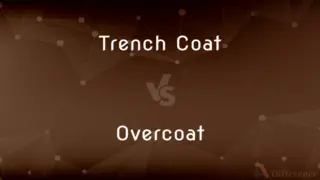
Next Comparison
Trench Coat vs. OvercoatAuthor Spotlight
Written by
Tayyaba RehmanTayyaba Rehman is a distinguished writer, currently serving as a primary contributor to askdifference.com. As a researcher in semantics and etymology, Tayyaba's passion for the complexity of languages and their distinctions has found a perfect home on the platform. Tayyaba delves into the intricacies of language, distinguishing between commonly confused words and phrases, thereby providing clarity for readers worldwide.






